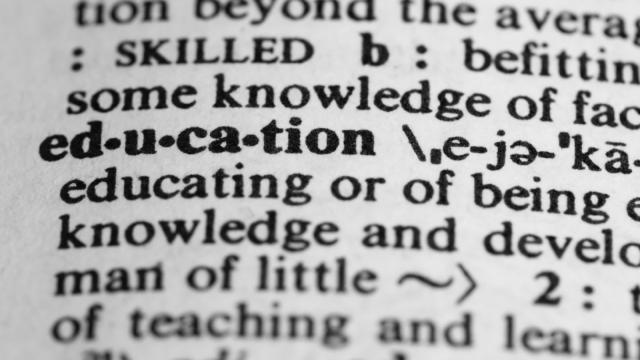
Social progress is never a straightforward, linear process. Sometimes society struggles to recognize moral questions that in retrospect should have seemed obvious. Then, in a historical moment, something crystallizes. Slavery, civil rights, women’s rights, marriage equality: each of these moral challenges arose in the national conscience before becoming the subject of a fight for justice (some of which have yet to be won).
I believe the moment will come, perhaps very soon, when we as a society will ask ourselves: How can we deny a higher education to any young person in this country just because she or he can’t afford it?
The numbers show that barriers to higher education are an economic burden for both students and society. They also show that the solution – free higher education for all those who would benefit from it – is a practical goal.
But, in the end, the fundamental argument isn’t economic. It’s moral.
The College Cost Crisis
Consider the situation in which we now find ourselves:
Social mobility in the United States is at or near its lowest point in modern history. A nation which prides itself on the “only in America” myth has fallen far behind other countries in this, the primary measurement of an equal-opportunity society.
In the midst of this class ossification, higher education remains a powerful tool for social mobility.
Education is in danger of becoming an inherited privilege. The greatest predictor of a child’s likelihood of graduating college lies in the answer to the question, Did his parents graduate high school? The OECD found that “The odds that a young person in the U.S. will be in higher education if his or her parents do not have an upper secondary education are just 29% – one of the lowest levels among OECD countries.”
That’s not a “land of opportunity.” This kind of economic aristocracy is fundamentally un-American. And it’s getting worse.
The cost of higher education is hitting lower-income Americans the hardest. As a recent analysis (from the Hechinger Report, in collaboration with Education Writer’s Association and the Dallas Morning News) showed, “America’s colleges and universities are quietly shifting the burden of their big tuition increases onto low-income students, while many higher-income families are seeing their college costs rise more slowly, or even fall.”
More student aid is being directed to wealthier students, further exacerbating the educational inequality problem. And we certainly don’t have an overabundance of graduates. In fact…
Young Americans aren’t as educated as the young citizens of many other developed countries. The OECD also found that “The U.S. ranks 14th in the world in the percentage of 25 to 34 year-olds with higher education (42%).” When all adults of working age are considered, the U.S. is still one of the highest-educated countries in the world. But when this age group is considered, we are falling behind.
That’s a personal loss for our young people, and an economic loss for the country. Better-educated adults earn more – a lot more. College-educated men in the U.S. earn an average of $675,000 over the course of a lifetime than those with no upper secondary or higher education. That figure is $390,000 for women – and closing that age gap is another moral issue. What’s more, the value of a college education increased in the U.S. in the first decade of the 21st century. (Source: OECD)
Unfortunately, higher education is extremely expensive in the United States. In fact, the cost of the education itself may be the highest in the world, since other nations include the cost of income lost during the college years. Even when the statistics are combined, only three countries are costlier.
That figure becomes even worse when we consider the fact that, compared to other nations, public funds pay for far less higher education in the U.S.. The “Education at a Glance” study also found that “Across all OECD countries, 30 percent of the expenditure on higher education comes from private sources, while in the U.S., 62 percent does.”
Or, to put that another way, public funds pay for 70 percent of higher education on average in developed countries. In the United States, they only pay a little more than half as much on a percentage basis – and our education costs more, too.
The states are withdrawing their education funds. This trend has been exacerbated as states (the primary source of public higher education) withdraw their funding for public education in times of economic downturn, and fail to restore it in times of economic growth.
Everyone should want to change these statistics. Is that practical? The answer may surprise some people.
Investing in Education
Higher education is a very good investment. The United States has one of the highest “rates of return” on college degrees in the world. OECD data shows that the “net present value” of a higher education – its estimated long-term value, minus total costs – is higher in the United States than it is anywhere else in the world except Portugal.
Free higher education is an affordable dream. As Jeff Bryant of the Education Opportunity Network points out in his “free public higher education” petition, free higher education is not an unaffordable fantasy. If public colleges and universities were to be made available to qualified students without charging tuition, the total cost would be an estimated $62.6 billion. And, as Richard Long notes, approximately $69 billion is spent each year on government aid to students.
There is some overlap between the two figures. Some of that student aid goes to tuition for public colleges and universities. But much of it goes to private universities, at levels of quality that range from Ivy League elite to fly-by-night predatory.
Let’s not kid ourselves: Doing this the right way would require increased government spending. It would also call for better coordination between state budgets and federal expenditures, which can be achieved in a number of ways. But it would be money well spent. Higher income for individuals equates to higher spending, and therefore to economic growth.
What’s more, debt is also an enormous drag on the economy. We are currently experiencing a student debt crisis of vast proportions – and it’s getting worse. Federal Reserve data tables show that the total student debt outstanding in this country is now $1.225 trillion. What’s more, that figure has risen by nearly $400 billion over the last four years, or nearly a hundred billion dollars a year.
Imagine the stimulus effect that $400 billion might have had in these post-financial crisis years. Imagine the even greater stimulus effect that we might have experienced if there were a massive write-down on the overall $1.2 trillion. That kind of policy initiative should also be on the table.
How much will it cost? We can’t know. We are currently spending nearly $70 billion per year in student aid. Even if that figure were to double – which is by no means inevitable – it would be more than paid for by Rep. Jan Schakowsky’s Fairness in Taxation Act, which increases tax rates for millionaires and billionaires on a graduated basis to a modest top rate of 49 percent for billionaires. (It was 91 percent under Republican President Dwight D. Eisenhower.) That bill would raise $872 billion over a 10-year period. (Source: EPI.)
Another way to cover the cost is by closing corporate tax loopholes. That would bring in an estimated $1.24 trillion over the next 10 years. (Source: U.S. Treasury Department analysis.)
Going forward, a system of free higher public education would eliminate the lion’s share of student indebtedness. Billions in new funds would return to general circulation each year. Graduates would earn higher incomes, unencumbered by debt. It would be a win-win.
The Moral Imperative
Economically, free public higher education is an achievable goal. And one wonders why the deficit scolds, who profess such concern for young people in there trying to cut Social Security, seems so disinterested in helping them get an education, find jobs, or fulfill their destinies.
But the fundamental argument in its favor is moral, not fiscal. That moral imperative becomes even stronger when we consider the massive injustice we have perpetrated by forcing graduates into an economy that has reached historically awful levels for new entrants into the job market. That alone is an abandonment of our national obligations – both to young people and to our future. Compounding that misery with record-high student debt is nothing short of disgraceful.
Free public higher education is a clean and ethical solution. Elite private institutions will undoubtedly survive, and there’s no reason why grants might not be offered in certain cases for students who can only receive the education they need in specialized institutions. At the other end of the spectrum, many of today’s diploma mills would undoubtedly go under. But that, by all the evidence, wouldn’t be a loss and might even be a net social gain.
But, while the economic arguments are impressive, it’s important not to base this debate on numbers alone. The 2012 platforms of both political parties argued that education initiatives must be geared toward teaching skills that will get graduates hired by America’s corporations. That’s certainly valuable for students who have chosen that as their educational goal.
The American educational tradition has never been strictly utilitarian. Public institutions of higher learning shouldn’t exist merely to provide free employee training for the private sector.
Colleges and universities must also produce the musicians, writers, philosophers, scientists, and visionaries of tomorrow. We must stay true to the vision of educational philosophers like John Dewey, who recognized that the primary purpose of education at all levels is to produce fully realized citizens in a democratic society.
The ability to participate fully in all aspects of democratic life has always been the American dream. Free higher education is essential to realizing that dream, and it’s an idea whose time has come.
3 WAYS TO SHOW YOUR SUPPORT
- Log in to post comments

















